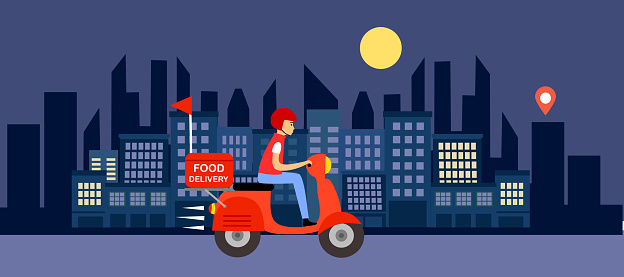In recent years, food delivery services have transformed the way we enjoy meals. With the rise of technology and changing consumer preferences, ordering food for delivery has become a convenient and popular option for many people. In this article, we will explore the evolution of food delivery services, the advantages they offer, and their impact on the restaurant industry and consumers.
The Convenience of Food Delivery
Food delivery services have revolutionized the way we access and enjoy restaurant meals. With just a few taps on a smartphone app or clicks on a website, consumers can have a wide range of cuisines delivered right to their doorstep. This convenience eliminates the need for travel, parking, and waiting in line, making it an attractive option for busy individuals, families, and those who prefer to dine in the comfort of their own homes. Whether it’s a quick lunch at the office or a cozy dinner at home, food delivery services provide a hassle-free solution for satisfying cravings and saving time.
Expanding Choices and Diversity
Food delivery services have significantly expanded the culinary options available to consumers. Instead of being limited to nearby restaurants, people can now explore a variety of cuisines and flavors from different locations. Whether it’s exotic ethnic dishes, healthy salads, gourmet burgers, or vegan specialties, food delivery platforms offer a diverse range of choices to suit various preferences and dietary needs. This accessibility to a wider selection of restaurants and menu items enhances the overall dining experience and allows individuals to discover new flavors and culinary experiences.

Boosting Small Businesses and Local Restaurants
Food delivery services have provided a lifeline for many small businesses and local restaurants. These platforms offer smaller establishments the opportunity to reach a broader customer base without investing in costly infrastructure or marketing efforts. By partnering with food delivery services, these businesses can focus on their core expertise of preparing delicious food while leaving the logistics of delivery to the experts. This symbiotic relationship helps promote entrepreneurship, supports local economies, and encourages culinary diversity in communities.
Technological Advancements and Seamless Experiences
Advancements in technology have played a pivotal role in enhancing the efficiency and seamlessness of food delivery services. Mobile apps and user-friendly websites make ordering food a breeze, allowing customers to browse menus, customize orders, and track deliveries in real-time. The integration of GPS technology enables accurate delivery tracking, reducing uncertainties and providing transparency. Additionally, payment options, such as digital wallets and secure online transactions, make the ordering and payment process smooth and convenient for customers.
Job Creation and Economic Impact
The growth of food delivery services has created numerous employment opportunities. From delivery drivers to customer service representatives and kitchen staff, these platforms have generated jobs across various sectors. This job creation not only provides income for individuals but also contributes to the overall economic growth of communities. Moreover, food delivery services often partner with local restaurants, supporting their financial sustainability and enabling them to retain staff even during challenging times.
Environmental Considerations and Sustainability
While food delivery services offer convenience and choice, they also raise concerns about environmental sustainability. The transportation of meals to individual locations can result in increased carbon emissions and waste. However, some platforms are taking steps to address these concerns. For instance, many companies are adopting eco-friendly packaging options, optimizing delivery routes to reduce mileage, and promoting the use of electric vehicles or bicycles for deliveries. Consumers can also contribute by opting for consolidated orders, minimizing single-use packaging, and supporting platforms that prioritize sustainability.
The Future of Food Delivery
The future of food delivery services looks promising, with ongoing technological advancements and a growing demand for convenience. As technology continues to evolve, we can expect further improvements in delivery speed, accuracy, and customer experiences. Additionally, the integration of artificial intelligence and data analytics can help personalize recommendations, streamline operations, and enhance the overall efficiency of these services. The industry is also witnessing the emergence of ghost kitchens and virtual restaurants, which operate solely for delivery purposes, further expanding the possibilities for culinary experiences.
Conclusion
Food delivery services have transformed the way we access and enjoy restaurant meals, offering convenience, choice, and economic opportunities. These services have expanded the culinary landscape, boosted small businesses, and provided employment opportunities. While there are environmental considerations, efforts are being made to address sustainability concerns. As technology continues to advance, food delivery services are likely to further enhance the customer experience and play a significant role in shaping the future of the restaurant industry.




